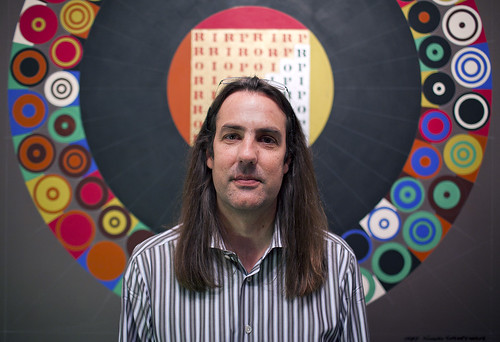
Philip Barlow and Simon Gouverneur’s ‘Welkin’ (and all other photos) by Max Cook
Art is a strange beast that defies definition. It is everything you want it to be as well as everything others say it isn’t. You may see a painting at a garage sale and think, “Wow, that’s terrible,” but when it’s hung in a gallery it can attract admiration, spark controversy, or in the end cause someone to say, “Wow, that’s terrible.” And it is, and it might be, and it isn’t. More often than not the quality and value of art is decided by others, by the resume of the artist, by which gallery they’re represented by, and by the artist’s ability to talk about their work, but the true indicator of its value is whether you like it. It’s that simple.
Buying a piece of art, much like asking a girl on a date, can be intimidating if you don’t have prior experience. How do you know if a piece is priced too high? How do you recognize when something is priced too low? Who should you talk to when you’ve made the decision to buy? Should you ask the gallery for a discount? Are you buying on impulse or will you still love it when you wake up the next morning? Collecting art is something that can take time to learn, just ask Philip Barlow.
As a staple figure of the DC arts scene, I’ve spoken with Philip at least a dozen times over the years at various gallery openings, artist talks, and other events. At 6’4” he’s hard to miss and can seem intimidating (if you don’t see eye to eye with him as I do), but he’s one of the nicest and most accommodating people you’ll ever meet. An average conversation with Philip goes just as it would with any other person, but when he starts to talk about the art in his collection, you see where his true passion in life lies.
It would be unfair of me to talk about Philip without also including Lisa Gilotty, his partner and co-collector of twenty years. When I first heard about their collection, which consists solely of art that is either made by local artists or purchased in local galleries, I was intrigued to say the least. Recently I was fortunate enough to view their collection, talk to them about their philosophy on collecting, as well as hear about the background behind many of their pieces.
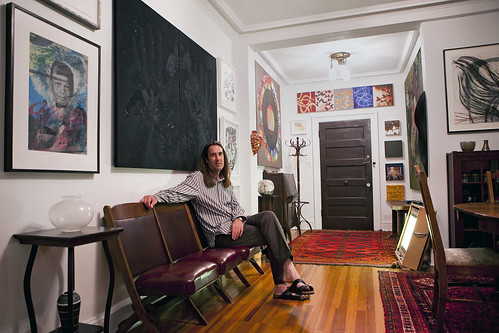
Barlow, who now works as an actuary, became interested in art while attending Georgia State University. While he visited many museums and nonprofit spaces to look at art as a student, he was understandably not able to purchase anything. Even after he moved to DC he noticed that as his paycheck went up, so did his rent, and therefore was still not able to comfortably afford any artwork.
That all changed in 1990 when his salary-to-rent ratio increased, enabling him to set aside a small budget for purchasing art. His first purchase, made before he met Lisa, was a print by James Wells from a Dupont Circle gallery called Brody’s. While the gallery has since closed (as they often do), it still remains his favorite to this day due to the connection he had with the owners, Tom and Judy.
“I decided I was interested in James Wells’ work, so I looked him up in Museums and Arts Washington and it said he was represented by Brody’s. I didn’t know what to do then so I called them up on the phone – if I made a fool out of myself, they’d never know it was me,” Barlow says. “But they were very nice and they invited me over to look at some of his work. So I went one Saturday and there were a lot of people there. What did I know? I just assumed there were always a lot of people there. I didn’t realize until later that they were actually having an opening for another artist. So Tom left the opening of another artist to show me work by James Wells which was very nice of him.”
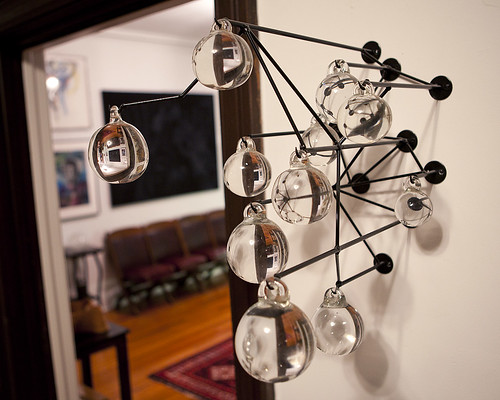
Graham Caldwell (also Maggie Michael, Billy Colbert, Inga Frick and Nancy Sansom Reynolds)
Fast forward to present day, as a seasoned professional and with the help of Lisa’s additional income, their monthly art budget (and knowledge of art) has grown considerably. “When I started collecting I set aside a hundred dollars per month for buying art. I decided that was not enough, so it quickly went to two hundred per month and it kept going up until it was five hundred per month. By the time it got to that point, I gave up on a specific amount.”
That’s not to say that he and Lisa have an unlimited art budget now. “The discipline of not being able to buy everything we want forces us to concentrate on what we buy. As a ground rule we try to keep a roof over our heads and pay for art when we buy it, but occasionally we’ll pay for a piece over time.”

Leo Villareal
Fortunately he and Lisa have very similar tastes in art which makes agreeing on purchases much easier, however keep in mind that Philip works as an actuary. “I’m a number obsessed person,” Barlow says, “So I tend to like symmetric work, obsessive work, patterns – I’m drawn to anything that reminds me of numbers.” Not surprisingly his favorite artist is Wayne Edson Bryan. “He’s the most obsessive person I think I’ve seen. He paints and sands, paints and sands,” Philip says as he shows me his first relatively expensive purchase by the artist titled, Dancing Star.
Philip’s favorite piece in his collection is by Simon Gouverneur, a local artist who committed suicide in 1990, around the time that Barlow started his collection. Andrea Pollan, who now runs Curator’s Office on 14th Street, was showing Gouverneur’s work at the McLean Project for the Arts in 2000. As someone who relies solely on public transportation, Philip took the Metro from Dupont Circle to Ballston, then a bus to the closest stop where he then had to walk a half mile to the gallery. “I was very excited to see his work,” he says.
The Gouverneur piece (see top photo), Welkin, is symmetric and comprised of many repeating patterns. “I had seen his work and it was the kind of work that appeals to me. For example, starting here there are eight green circles, followed by eight orange circles, followed by eight red circles – there are all kinds of patterns and I occasionally look at it to try to figure out what it all means. I like work that I can stare at, contemplate, and try to figure out.”
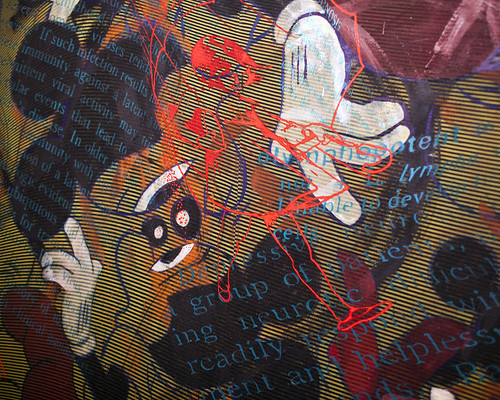
Inga Frick
As we bounced around from room to room in their condo, Philip had a story for every piece. It’s obvious in speaking with both he and Lisa that art is a big component of their life together, so much so that they have actually purchased the condo next door in order to accommodate a bigger collection.
“I think art is a good thing for people to have. It’s a good conversation starter,” Philip says. “When I first started collecting art and hanging it on the wall, people would come over and that was what they noticed. They didn’t notice my stereo, which I thought was a perfectly nice stereo, and they didn’t notice other things, they noticed the art. And when I go to someone’s house and they don’t have any art – it’s like weird. I think original art is worth the investment.”

Graham Caldwell
The more you learn about art, and the more you look at different types of art, the easier it is to make a decision about purchasing a piece for your collection. When you go to an exhibit, look at the work, understand what you like or what you don’t like about it, look at the price list, read about the artist, and ask questions.
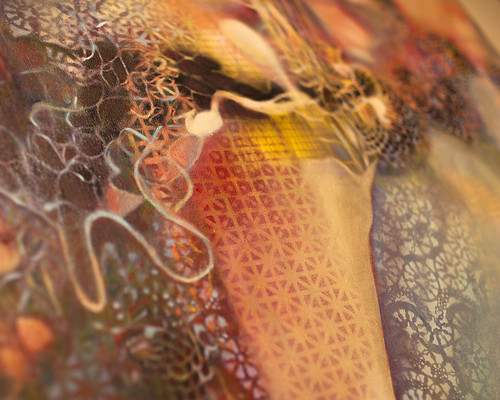
Pat Goslee
“I think one thing people worry about when they’re buying art is, ‘How do I know I’m not paying too much?’” says Barlow. “It’s all very subjective in art, but then again it’s subjective in a lot of things. I wouldn’t know if I was paying too much for a car. But if you look at enough art, you start to get a feel for what it should cost, and I think the vast majority of the work you will see in commercial galleries is reasonably priced. If you look at enough art you’ll be able to tell what’s an outlier, what’s too much. You’ll also be able to tell when someone isn’t asking nearly enough for a piece of art, like this piece over here!” Philip shows me a piece by Claire Watkins from the Arlington Arts Center that he bought immediately when he saw it. “They could have sold that thing ten times – it was way too cheap.”

Claire Watkins
It takes time to develop a sense for the art that you like and many of the nuances associated with making a purchase. You may have questions that you’re afraid to ask, but don’t let them prevent you from buying something that you really love. If you happen to see Philip at the gallery, use him to your advantage. “Anybody who wants to ask dumb questions but doesn’t want to ask the gallery can come ask me. If I don’t know the answer, I’ll ask for them.”

The “Blue Corner”: Robin Rose (triptych), Andrea Way (above Robin Rose), Top Shelf – Foon Sham (wood), Laurel Lukaszewski (black), Christopher Lavoie (white), Joe Mills (book), Andrea Way (wrapped in plastic), Maggie Michael (large blue/white), Amy Martin Wilber (blue strand), Michele Kong (next to Amy Martin Wilber)
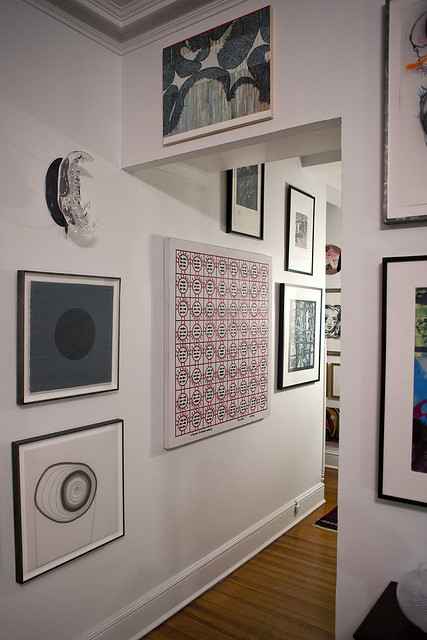
Graham Caldwell, Linn Myers, Leslie Shekitka, Jin Young Kang, Simon Gouverneur (middle piece), Sue Coe, Y. David Chung, Tom Green, Takako Nagai, Ruth Bolduan, Ruth Bolduan, Pat Goslee, Maggie Michael and Billy Colbert
I really enjoyed this piece, Max. The idea of art collecting can be kind of intimidating, so it’s nice to be reminded that it boils down to, “Buy what you like and can afford.”
Yeah!!! Yes I love seeing him at all the openings,,,He gets around to all the haunts of the real deal DC artists……I remember speaking with Philip at a PASS(happen’n spot) opening with my friend Mark Planisek…he is fan-tas-tik….great taste in art and real!! He has a great eye and he is great for the dc real art scene…Can not wait to see him again!yippeee!
Nice work, Max! Loved this.
Philip, you’re my favorite collector too.